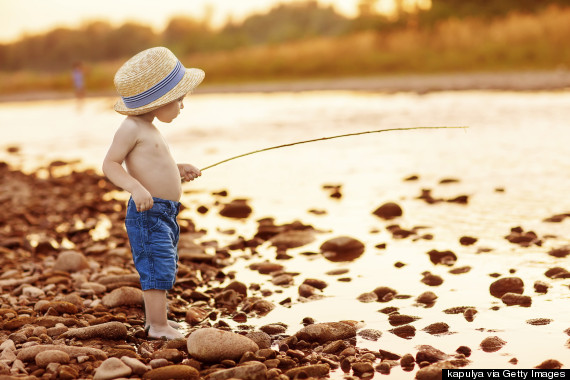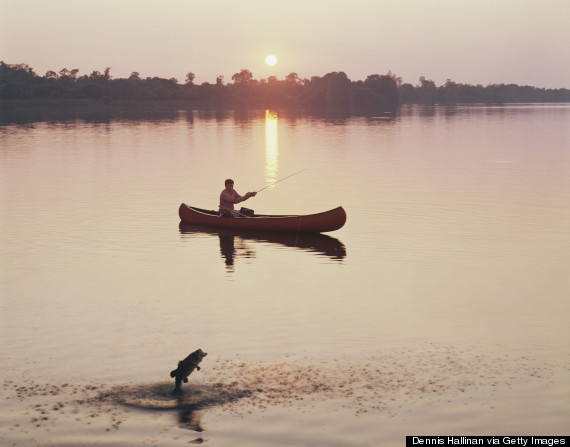Collaborative Fisheries Research West is a program that supports and facilitates research involving fishermen, managers and scientists. Unlike other cases we have examined, this is a program dedicated to supporting one very particular kind of citizen science. In this summary we describe the approach that CFR West has taken to supporting collaborative fisheries research — the principles and practices that they instill through their program — using the same framework that we have applied to citizen science programs in previous blog posts.
The Basics
Collaborative Fisheries Research West is a not-for-profit organization that develops partnerships between fishermen, managers, and scientists for the purpose of contributing to fisheries science and management, for example: bycatch reduction, gear recovery, population structure, or seafood markets. CFR West may fund projects directly, provide project management and oversight or contribute scientific expertise to these efforts. Projects must abide by a set of ten principles (link is external), the first of which is that projects must be relevant to fisheries management. The last round of funding, supported by the California Ocean Protection Council, committed over $1.1 million to 15 projects.
Program Participation
While all of the CFR West projects involve collaborators from the fishing community, participation varies amongst individual projects. Some are instigated by fishermen: for example, conducting aerial sardine surveys to complement acoustic-trawl surveys conducted by the National Marine Fisheries Service. Another project collects life history information on night smelt by beach fishermen in northern California. Others are driven by management needs x for example, an experiment to test the effect of trap hole diameters on the size distribution of hagfish was led by the California Department of Fish and Wildlife. All, however, are required to maintain close cooperation and communication amongst all three partner types, from identifying the research questions and determining best methods through data collection to data interpretation. This is one of the highest forms of collaboration and is recognized by scholars of participation to be an effective means to integrate different worldviews towards a common goal.
Fishermen get involved with the program often because they do not see the best available science used to inform management decisions – possibly because there xs not much available science. In these cases, fishermen lend their expertise to help steward the resource in the future. Managers are motivated to work together to improve the data available for developing regulations and policy. Scientists share a similar motivation – a desire to better understand fisheries ecology in order to support the livelihoods, economy, and ecosystems that depend on fisheries, and, of course, an interest in learning how populations and ecosystems respond to recreational and commercial fishing pressure.
Meeting the Mission by Balancing Goals
CFR West has the following mission statement:
CFR West engages commercial and recreational fishermen, resource managers, tribes, nongovernmental organizations, and scientists by facilitating and supporting applied research focused on fisheries and fisheries resources and their human dimensions. Through open and collaborative partnerships, CFR West contributes to the management of sustainable marine resources, and fosters the stewardship of those resources.
Data from CFR West are used for both scientific and management applications, which helps connect science and policy. This connection bolsters the sometimes flagging trust between fishermen and managers, who can have a conversation about the data and how they are interpreted. For the fishermen, participation fosters a sense of stewardship for the resource and participants report that taking on these responsibilities can be rewarding.
The stewardship aspect of this mission, aside from producing management-relevant science, brings together a diverse group of stakeholders in research and fosters a stewardship ethic among these communities. The manner in which CFR West implements its multi-faceted mission is affected heavily by the uncertainty and nature of its funding. As a result, most projects are, by necessity, short term and the means for maintaining continued support for long term monitoring, a requirement for good fishery management, are limited at best.
Data Types Good for a Citizen Science Approach
Collaborative fisheries research is designed to utilize expertise in the fishing industry gained largely through daily experience on the water or practical experience gained on the job. There are many avenues for such integration of expertise, as demonstrated by the wide diversity of projects under the CFR West umbrella. They are mostly unified by research that includes a large amount of fieldwork, as time on the water is the best place to share and demonstrate the experiential knowledge of fishermen.
Data Uses
Scientific Uses
The scientific partners in each of these projects generally make sure that the data contributes to the appropriate body of scientific literature. A number of the projects also enroll graduate students in the work, who use the data as part of their thesis work.
Management Uses
In addition to the data from the research projects, lessons learned from the research process itself can inform management. CFR West projects must be completed or transferred to an agency within three years, and some projects serve as pilots for potentially long-term programs within management agencies.
Scientific Credibility
verification of data quality
The collaborative aspect of CFR West xs approach promotes trust-building among participants in the program, and a degree of data verification happens through reputation-building of the investigators as trustworthy brokers of information. Otherwise, the data is reviewed the same way as most other fisheries research – by undergoing review as part of the process of making management decisions through the Pacific Marine Fishery Council, the Department of Fish and Wildlife or the National Marine Fisheries Service, as well as the peer-review process of publishing in academic journals and presenting at scientific conferences. CFR West also makes an effort to disseminate project results widely to include fishing communities and the interested public in a manner that is generally accessible to the non-scientist. For example, the results of the hagfish trap experiment were presented at meetings held in key port communities from Morro Bay to Eureka. This too functions as a kind of peer review, whereby those not involved in the research process have an opportunity to consider the projects and their results and provide input to CFR West and project collaborators.
raw data transparency and access
Every project must make the data publicly available unless there xs a specific sensitivity, but the logistics of this access can be tricky. Results published in scientific journals (a common product of these projects) often reside behind paywalls, so the fishing partners often do not have access, plus raw data is not always included. In addition, fisherman participants worry about sharing spatially explicit data, which might give away lucrative fishing spots or invite legal battles with DFW enforcement.
clarity of communications
Communicating about the scientific process comes primarily in the form of participation – fishermen, scientists, and managers are all invited to spend time designing the research, collection data, or otherwise observing the research process firsthand. Similarly, post-project community presentations and outreach materials offers everyone an opportunity to learn. One of the major challenges, however, is to design these in such a way that they are accessible to all.
willingness and capability to adapt methods
CFR West is currently beginning a process of evaluating itself. The evaluation will form the basis of plans for future collaborative research as well fundraising strategies. Some of the projects will live on, as they include plans to develop a strategy for future activity. The crab gear recovery project, for example, has developed a long-range plan to convert the effort to a largely industry-funded one, including work with the California Department of Fish and Wildlife to address legal issues that would otherwise interfere with the process.
Program Sustainability
Since the CFR West program focuses heavily on creating trusting relationships between fishermen, managers and scientists, it depends especially heavily on equal participation – xtrue collaboration x – through all the intellectual and economic aspects of the project. One of the challenges CFR West faces is that the funding is structured around short-term projects, while maintaining these relationships requires some standing level of base funding. Another challenge is that the nature of a traditional request for proposals, so familiar to scientists, is foreign to fishermen; ways of encouraging these fishermen to come forward with their own ideas that would benefit from collaboration should be developed.
Just like any research, collaborative fisheries research has some resource needs that are critical to success of the program. Many of these needs are specific to the research question at hand – for example, equipment and data analysis software. But there are a couple of additional resources peculiar to collaborative fisheries arrangements:
- coordinator, especially to connect potential partners.
- payment for fishing partner xs time (managers and scientists are generally salaried employees; if they are not fishing, fishermen are not earning a living)
- data management and regulating data access
Looking Toward the Future
Collaborative fisheries research is a subset of the broader citizen science community. It is one that celebrates and values the experiential expertise of fishermen. Yet, to date on the Central Coast, there are no models that blend collaborative fisheries research (with commercial fishermen) and more typical citizen science, which often focuses on long-term monitoring. Such a program might look something like fishermen recording observations while out on the water daily. Collaborative fisheries research is an evolving model, and for the long term, one that needs to collect quality data without huge injections of grant money. This can be done, but the model that demonstrates this goal does not appear to be out there yet.
For existing projects, the future holds a program evaluation. The CFR West director, Peter Nelson, says he is interested in participants x sense of what collaborative research is and if their feelings on the process changed over the course of their project. In addition, CFR West might shift its attention a bit – to be less of a grant-making institution and more of a boundary organization that helps cement relationships between the many partners in the fishing industry, management, and academic science.
 Aerial sardine surveys. Photo by Kirk Lynn, CDFW
Aerial sardine surveys. Photo by Kirk Lynn, CDFW
 Tag and release study of Paralabrax spp. Photo by Lyall Bellquist.
Tag and release study of Paralabrax spp. Photo by Lyall Bellquist.
Read the original post here.
















